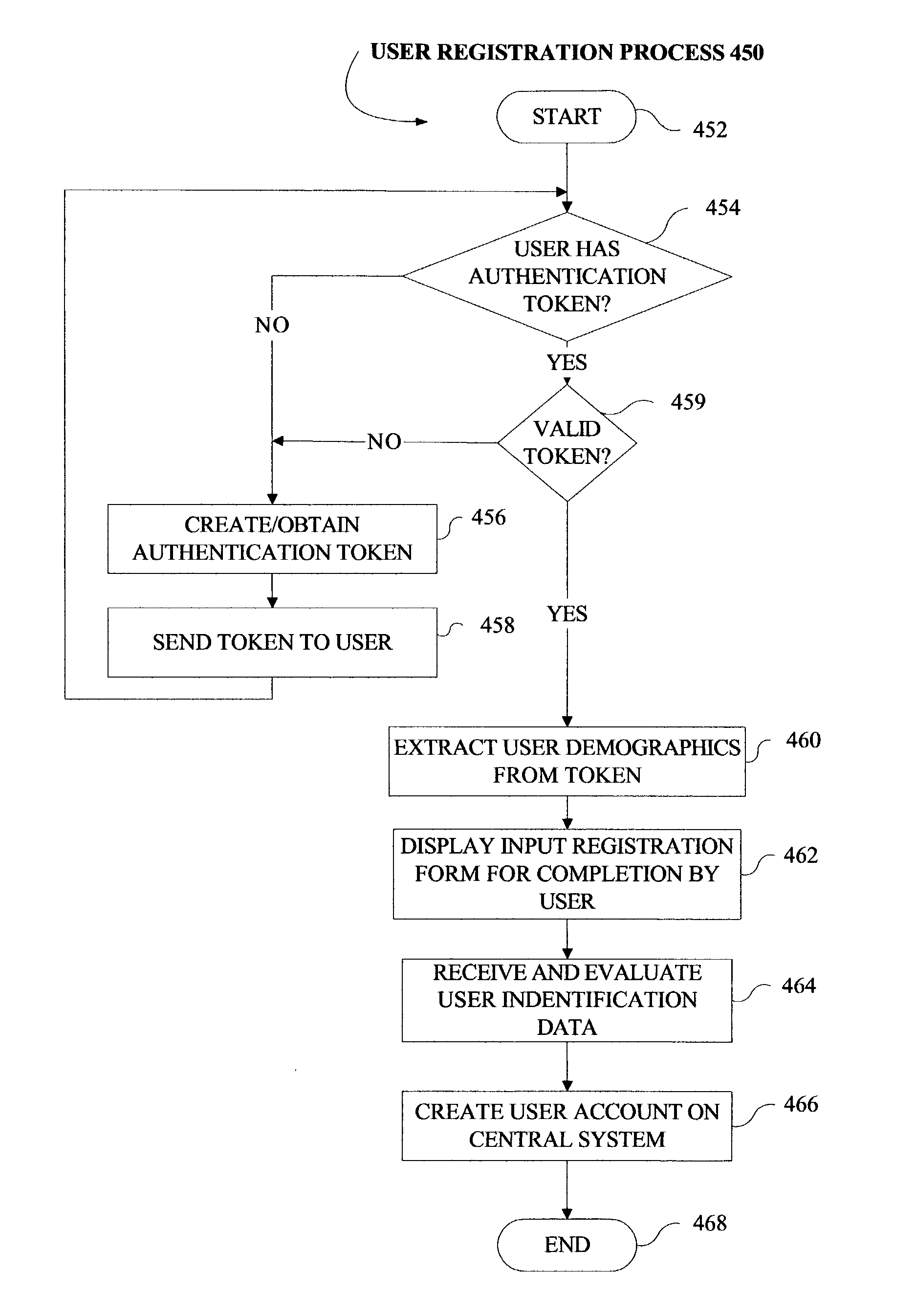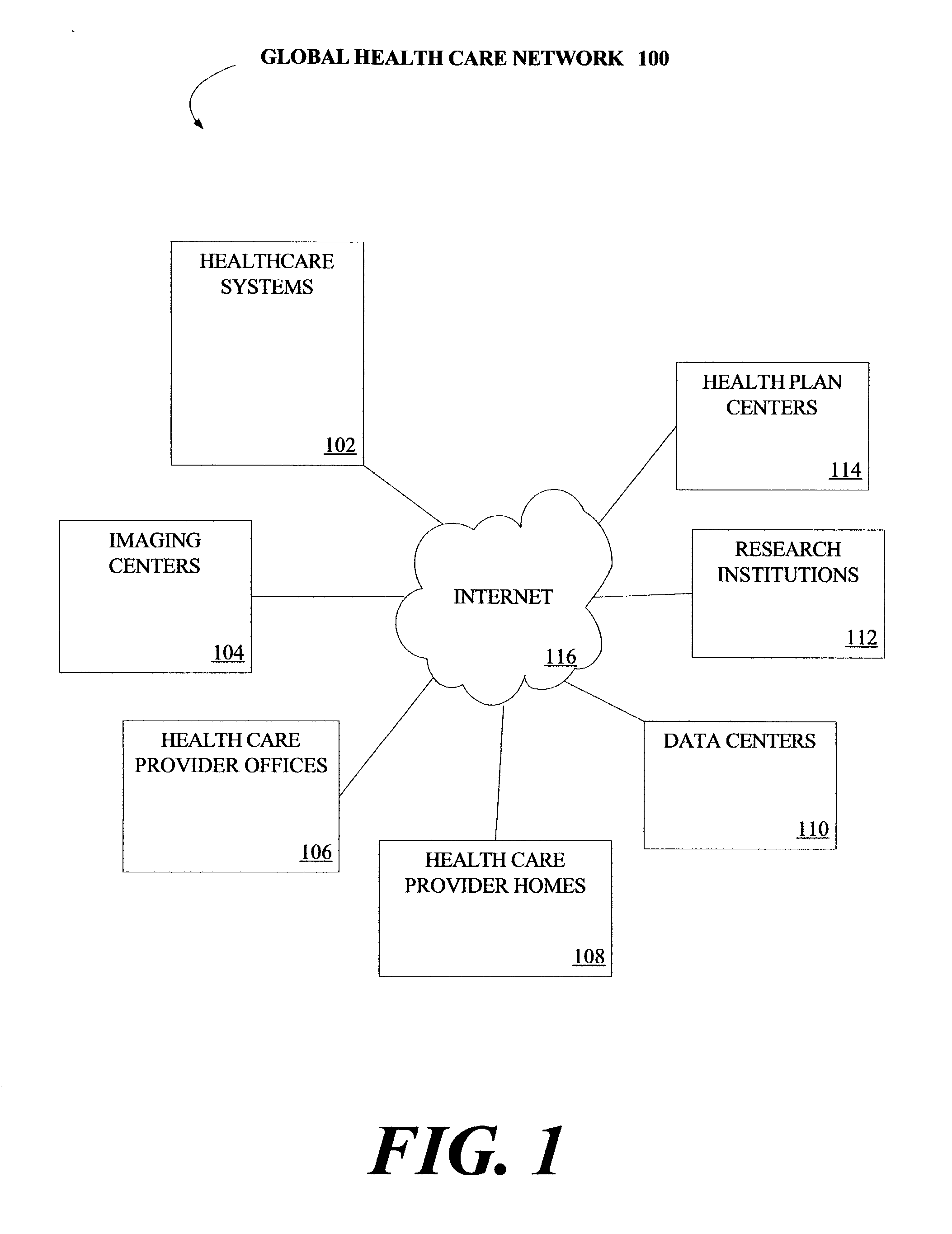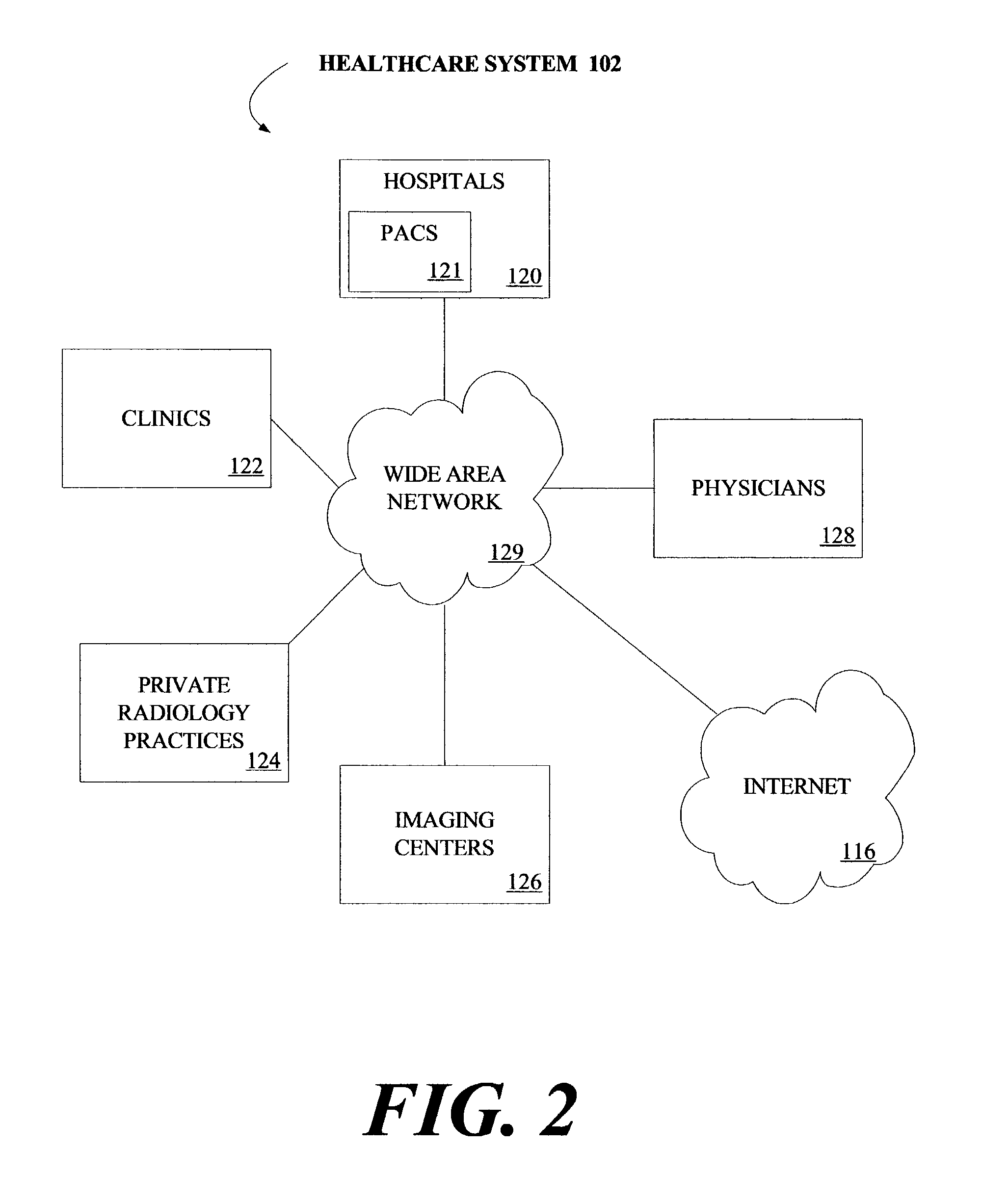A common and long-standing problem relates to the movement of patients between different health care providers within affiliated medical entities and between unaffiliated medical entities, such movement typically stranding the patient's historical
medical information at the source institution.
Historically, this problem stems from the paper-based representation of patient
medical information, such paper files requiring the burdensome process of
copying and mailing to share with others.
However, even as healthcare providers move to adopt digital representations and management of
medical information, significant barriers remain to the sharing and transmission of
patient information between providers.
However, to the best of applicants' knowledge, there exist no platforms that support integration and digital
information sharing at the cross-institutional level, particularly between unaffiliated medical institutions.
This failing stems from several critical outstanding obstacles.
When
patient information is contained in digital form, the formats are typically without accepted or implemented standard representations.
The successes of modern diagnostic imaging have resulted in limited solutions to cross-institutional communication challenges.
These solutions, however, are generally restricted to the sharing of
digital data between affiliated entities such as hospitals and clinics within a single health system.
However, it constitutes a proprietary system that cannot operate with commercial PACS or other “off-the-shelf” components now in widespread
hospital use.
Further, it does not support ad hoc searches for existing
patient data.
Nor does it support any method of identifying patients or obtaining patient
authorization as would be necessary to transfer data between unaffiliated medical institutions.
The system does not permit an arbitrary user (e.g. an authorized physician) to search the network for a user-specified patient and view or transfer images or reports relating to that patient.
In addition they provide no means of securing information as it moves between entities.
Another limitation of Pinsky et al. is a system architecture requiring images to move through a central “administrative” site, thereby creating a
bottleneck for information as the number of participating institutions accessing large data sets rises.
Again, this later Wilson et al. system is limited to sharing medical information, specifically radiological,
DICOM-based information, between affiliated institutions sharing a common network, common security procedures, and common
patient identification system.
As the system was proposed, it would not be applicable to multiple, unaffiliated institutions because it did not support necessary patient authorization of data transfer, or
authentication methods between entities with no prior relationship.
In addition, the latter-proposed Wilson system has problems with
scalability due to reliance upon a single
web server creating a data
bottleneck and total reliance upon
DICOM which cannot support more than a few simultaneous associations.
Finally, the latter Wilson et al. system does not address other relevant forms of medical information, notably
radiology reports which are not typically accessible through
DICOM communications.
While this Channin proposal represents a proposal for cross-institutional, peer-to-peer sharing of
imaging data between unaffiliated institutions, Applicants believe that its pure peer-to-peer architecture is not workable in a practical implementation for reasons including lack of
scalability, lack of reliability, lack of security, an inability to apply the system to generalized situations, and an absence of patient authorization mechanism for data transfer.
As such there is no guarantee that all entities are connected and it is possible if not likely some requests may never reach a destination entity actually having the sought after data.
It is quite difficult for any one peer to know about and / or organize the contents of all the other peers on the network.
Further, DICOM and HL7 are insufficient to support peer-to-peer transfer due to their static configuration of IP addresses, i.e. each hospital would need to be hard-wired to accept communications from every other hospital.
DICOM supports only a limited number of simultaneous connections, and HL7 does not support queries of any kind.
Hospital information systems and PACS in particular are notorious for unreliability, with uptime in the range of about 97% (as compared, for example, to financial systems that may approach 99.999% uptime).
Hospitals are typically unaffiliated outside of their immediate group, and there are strong economic and political barriers to trusting one-another.
Such associations would be difficult if not impossible with a true peer-to-peer network.
Moreover, true peer-to-peer networks suffer from potential security exploits in the form of malicious users masquerading as peers.
With respect to generalized situations, the PACSter concept is limited to PACS-enabled institutions and fails to address access to and sharing of information by those entities that do not possess such technology.
Finally, Channin does not contemplate a solution to the problem of patients authorizing the transfer of
digital data between unaffiliated institutions, a cornerstone of international data privacy regulations including HIPAA in the United States and the Directives of the European Council.
While there have been various disclosures and proposal for methods to connect parties for the purpose of sharing digital medical information, significant obstacles remain to communication between parties not possessing an a priori relationship.
Notably lacking are means of identifying data relating to the same patient at different institutions given the absence of unique patient identifiers of national and international scope, and means for efficiently obtaining an authorization from the patient permitting the transfer of his or her data.
Moreover, these earlier proposals all suffer from significant drawbacks in
scalability of participants in a network be they users or, more importantly, medical institutions providing the data, in security of communications and data transfers, in compliance with data privacy regulations, and in reliability in uptime and hence finding all relevant data.
In addition, these earlier proposals do not provide a means of accessing data from information systems that do not support query / retrieve operations (e.g. systems containing only an HL7 interface) nor do they afford users at institutions lacking
digital imaging capabilities a means of participating in the network.
As a result of these obstacles and despite the tremendous potential benefit to patients afforded by secure, portable digital information, present-day communication of historical
patient data between healthcare providers generally remains limited to the physical transfer of data on paper or film (by hand or conventional mail), or by
facsimile transmission of paper records over telephone networks.
 Login to View More
Login to View More  Login to View More
Login to View More 


